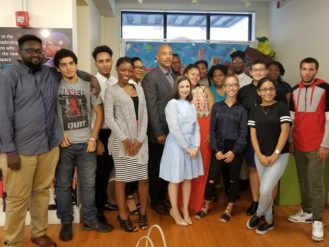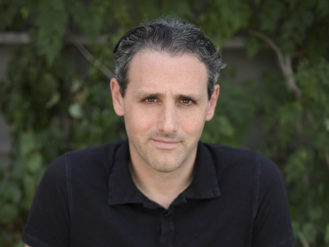Where Computer Code Is a Language of Opportunity
Two innovative programs supported by AT&T give young people early exposure to tech skills that could change their lives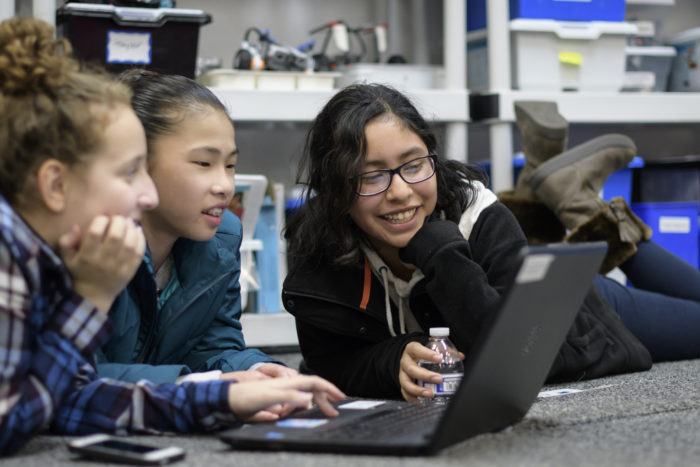
Students participate in a Girls Who Code program in Montclair, N.J., in November 2017 (Photo by Carey Wagner, courtesy of Girls Who Code)
Taneyah Jolly, a 16-year-old from the Bronx, knows about the gender gap in technology, but she has already acquired her first tools to overcome it. In a six-week program offered by the non-profit Girls Who Code, Jolly has learned how to write code in more than one language, how to design a website, and even how to program a robot to make its way through a maze—her personal favorite new skill.
During the program, hosted in corporate settings such as AT&T’s office at Rockefeller Center, Jolly learned about the real world of the tech industry as well, through field trips and guest speakers. “We’ve had a lot of women speak about their experiences in a male-dominated field,” she said. Such an opportunity “is always helpful,” she continued, “because as girls from Girls Who Code continue these courses in college, and pursue these careers, there’s less people like us.”
Changing that picture, however, is what Girls Who Code is all about. The tech industry in the U.S. needs more highly skilled workers, which means drawing on candidates as demographically diverse as possible. The U.S. is lagging behind other countries in terms of educating young people about technology and preparing them for careers. Even if a student doesn’t grow up to be a systems analyst or a web developer, learning technology skills improves problem-solving capabilities and all-around career potential.
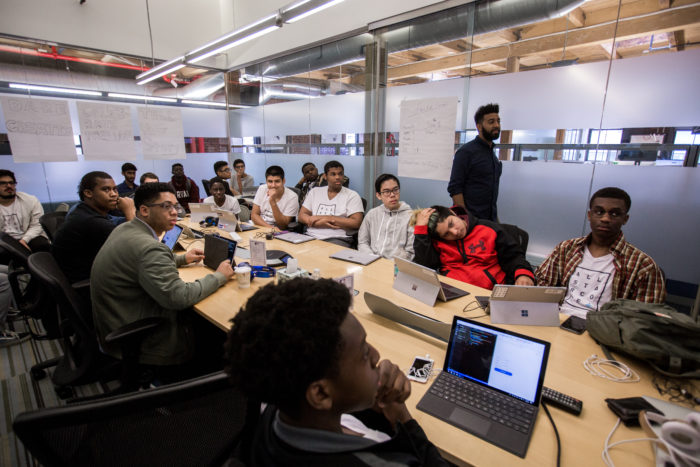
Eric Foster teaching a class at All Star Code. “I tell everyone this is the best gig ever,” he said (Photo by Natalie Keyssar, courtesy of All Star Code)
That’s why there’s been a cultural push to incorporate coding into classrooms across the country. Among tech giants, AT&T enthusiastically endorses this movement, which has inspired the company to provide funding and other support for Girls Who Code and All Star Code, two outstanding programs that give high-school students a jump start in technology through after-school and summer programs.
“AT&T is committed to bridging the opportunity gap in tech for populations that have been traditionally excluded from the field, including women, students of color and low-income students,” said Marissa Shorenstein, president of AT&T New York. “We are proud to collaborate with these innovative programs that help to instill students with the skills and confidence they need to succeed.”
Girls Who Code is “trying to close the gender gap in technology and the computing sector by running programs that educate, equip and inspire girls to pursue 21st-Century opportunities,” said Chrissy Ziccarrelli, director of education for the nonprofit. The nonprofit has served more than 90,000 young women so far.
“Girls in elementary school are just as interested in science and technology as boys,” Ziccarrelli said, adding that there’s a significant drop-off in enthusiasm around middle school, perhaps due to perceived social norms and pressures to conform. “We really try to focus on not only building a community aspect,” Ziccarrelli continued, “but providing role models [so girls can] identify with someone who’s already doing this work.”
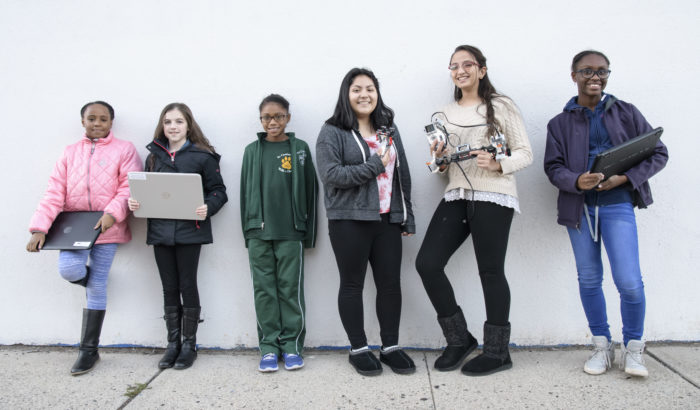
At the Girls Who Code Clubs program in Montclair, the group held a graduation day and presentation for family and supporters (Photo by Carey Wagner, courtesy of Girls Who Code)
Encouraged by positive outcomes, AT&T has given Girls Who Code $4.3 million in funding since its launch in 2012 and more than $1 million to All Star Code over the past three years. “AT&T is one of our oldest and largest partners,” Ziccarrelli says. “Not only have they provided space for girls to learn, but they provide in-person role models who really bring to life the idea of what the technology industry is and the people who do it.”
All Star Code, for its part, offers coding classes to underserved young men in the African-American and Latino communities, addressing their individual needs as well as society’s gaps in wealth, income and opportunity. The technology industry employs fewer black and Latino workers compared to national workforce averages, and people of ethnic minorities represent a fraction of collegians who study computer science. All Star Code enrolls hundreds of young men each year, giving the teenagers a launching pad for college and beyond.
Eric Foster, lead instructor of a cohort of 21 students aged 15 to 18 from the New York metropolitan area, says watching the students grow across this summer’s seven-week intensive program in Manhattan has been extremely rewarding. “I tell everyone this is the best gig ever,” Foster said. The element of the program he appreciates most is its holistic approach. Classes run weekdays from 9 a.m. to 4 p.m., with an hour break for lunch, while an additional “office hour” until 5 p.m. allows students to get one-on-one time with teachers and continue working on their individual projects.
Not only are the young men learning computer programming languages like JavaScript, along with how to build web and mobile applications, but also the “soft skills” needed for advancing their careers. This includes networking, personal finance, and the college-application process.
“It’s unique,” Foster says of the curriculum. “It’s not just learning and regurgitating code, it’s really about creating well-rounded young men.” His observation is borne out in the projects his students have chosen. They’re building “tools for their communities,” he says, citing examples such as an app that connects local mentors to prospective mentees and a website that helps people find others in their area who might be able to help out with particular tasks.
“It’s a great introduction into the code world,” said Blake Simpkins, a 17 year old from Montclair, N.J. “It’s also shown me what it’s like to have a work schedule and a job life.”
Simpkins, who wants to be an entrepreneur after college, is looking forward to “demo day,” when he and his classmates will present the apps they’ve built to representatives from dozens of high-profile companies, an invaluable opportunity. Many guests from the tech world have also shared their inspirational stories of overcoming adversity to rise in the ranks. “It teaches you [that] if you apply yourself, you can actually do this,” Simpkins says of All Star Code. “I think I will carry this experience forever.”





